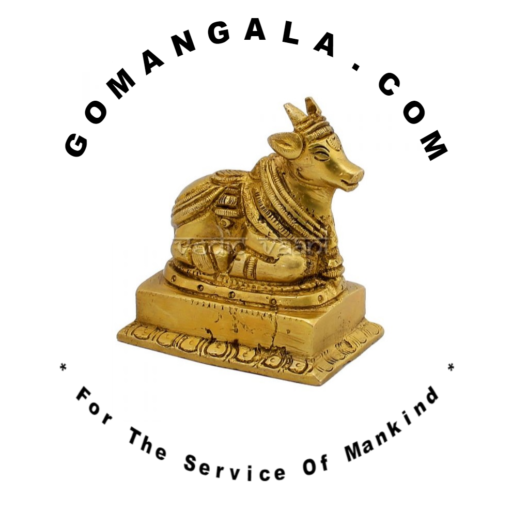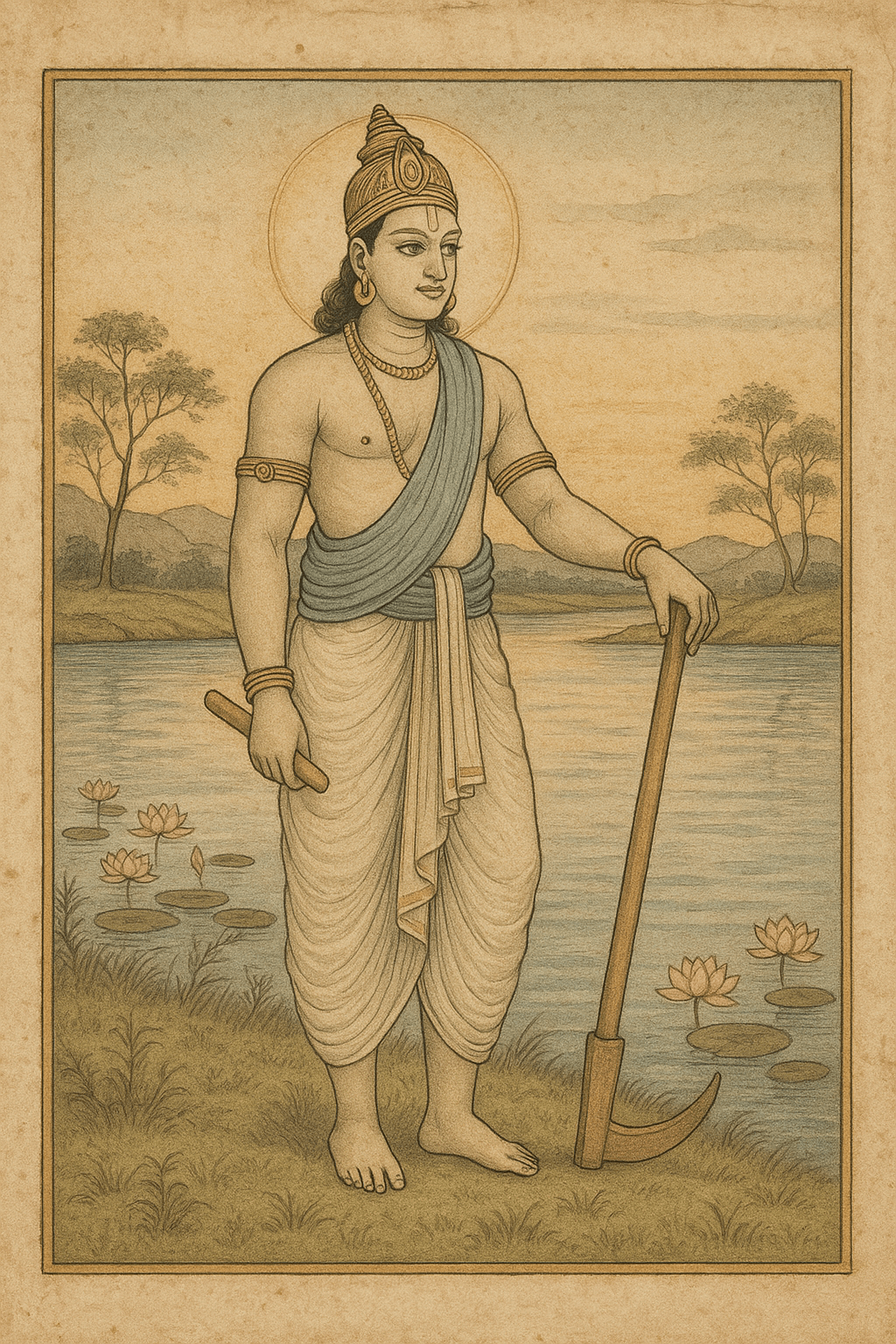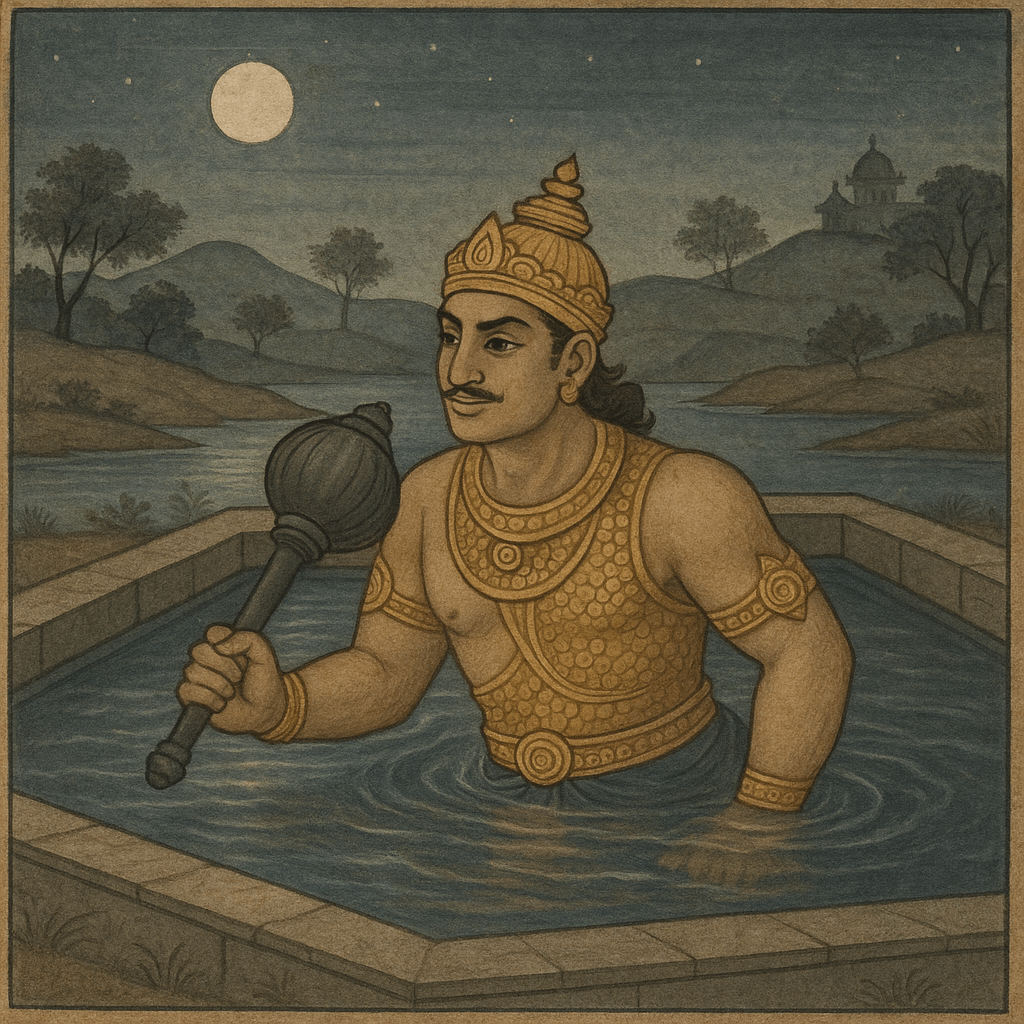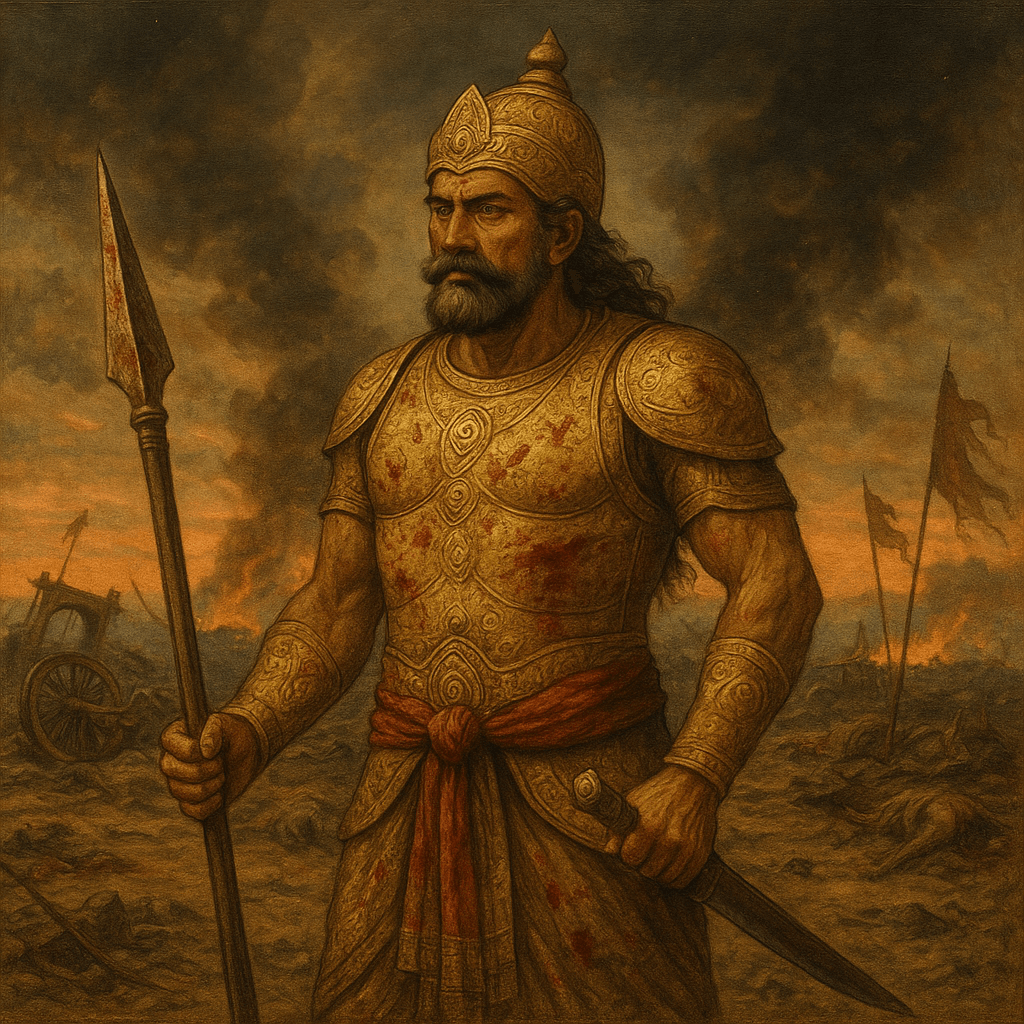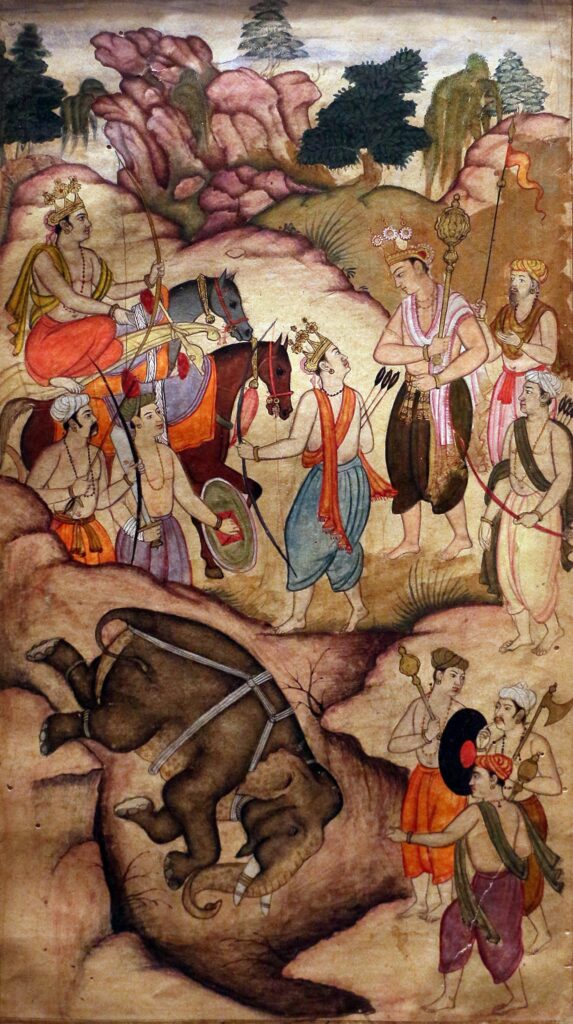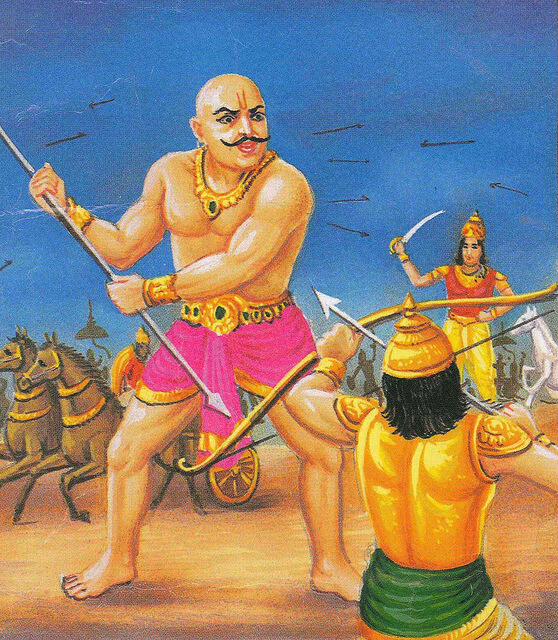Gadhayuddha Parva is the seventy-seventh Upa Parva included in the ninth Maha Parva, named as Shalya Parva. Vaishampayana continued narration to Janamejaya in reply to his queries as follows.
When was there a mutual fight in the Mahabharata war?
अश्टादश दिनान्यद्य युद्धस्यास्य जनार्दन ।
वर्तमानस्य महतः समासाद्य परस्परं ॥
‘Today being the eighteenth day, O Janardana, the day for mutual fight has approached’. Arjuna was speaking with Krishna.
Arjuna and other Pandava brothers were spectators for the mutual fight between Bhima and Duryodhana. There was no soldier supporting with weapons on the eighteenth day but Balarama was the referee there. Balarama was away from the Mahabharata war but a most powerful warrior. Krishna had supported his pilgrimage and his impartial stand.
What did Arjuna hint in the mace fight engaged by Bhima?
धनंजयस्तु श्रुत्वैतत्केशवस्य महात्मनः ।
प्रेक्षतो भीमसेनस्य हस्तेनोरुमताडयत् ॥
Meaning: Arjuna on hearing the words of great Krishna, had brought the attention of Bhima, during his fighting with Duryodhana, shown by slapping his own left lap, hinting him to blow the thigh with the mace. The Sanskrit of Vyasa is seen here. But the original verses were shuffled within the palm leaf bundles. Mahabharata war had been fought for eighteen days only as told by Vyasa.
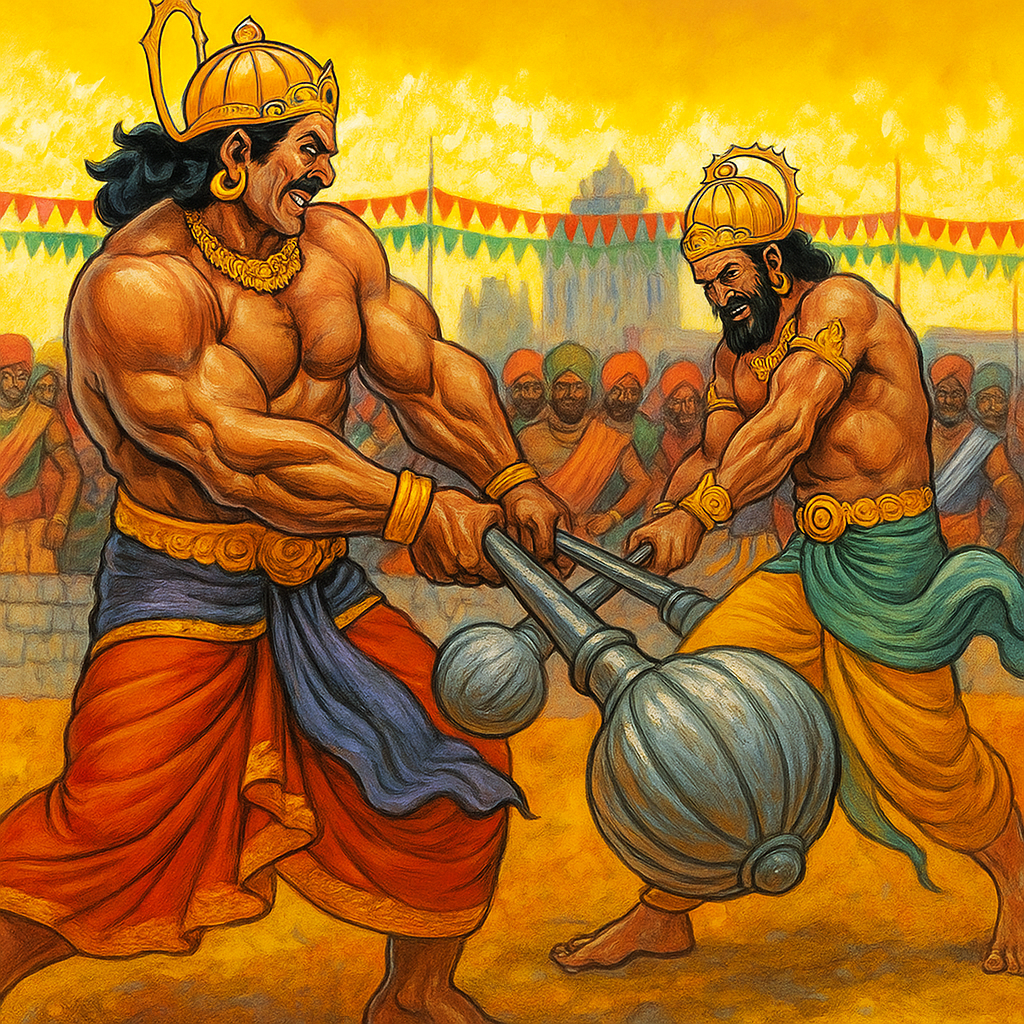
What did Vyasa tell to Yudhishtira at Upaplava that was remembered by him then?
उपप्लव्ये महर्षिर्मे कृष्णद्वैपायनोऽब्रवीत् ।
यतो धर्मस्ततः कृष्णो यतः कष्णस्ततो जयः ॥
Yudhishtira remembered the words of Vyasa since he had informed him at Upaplava about the success of the war, as Dharma it is Krishna, he follows it, and hence, where there is Krishna there is the success. Pandavas had won it by Krishna.
